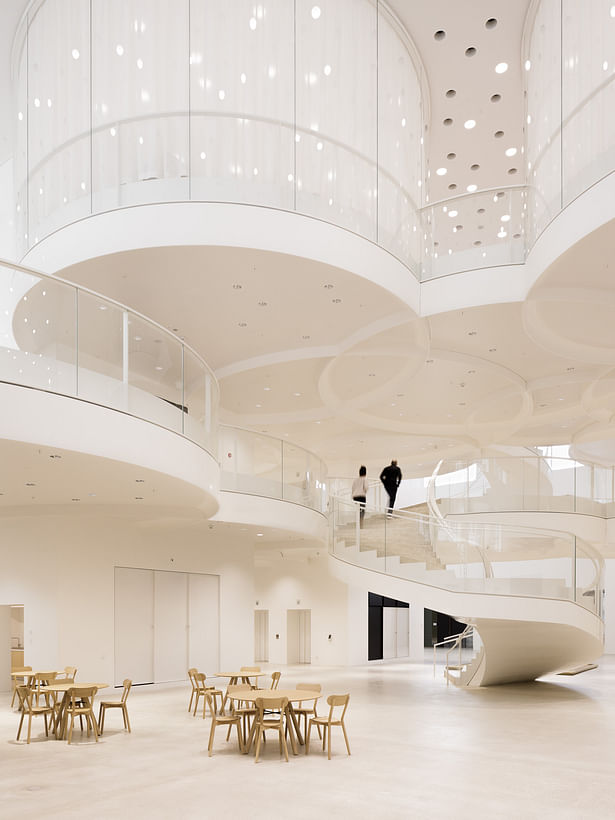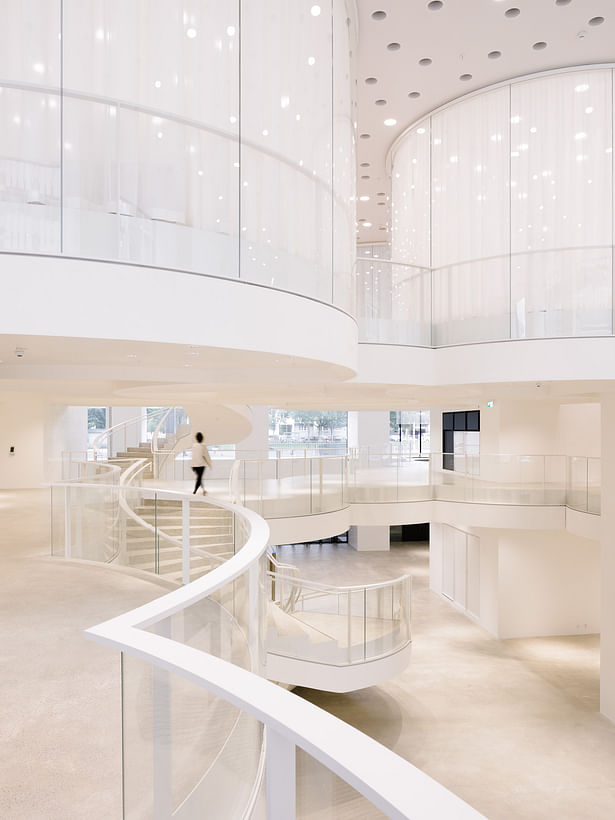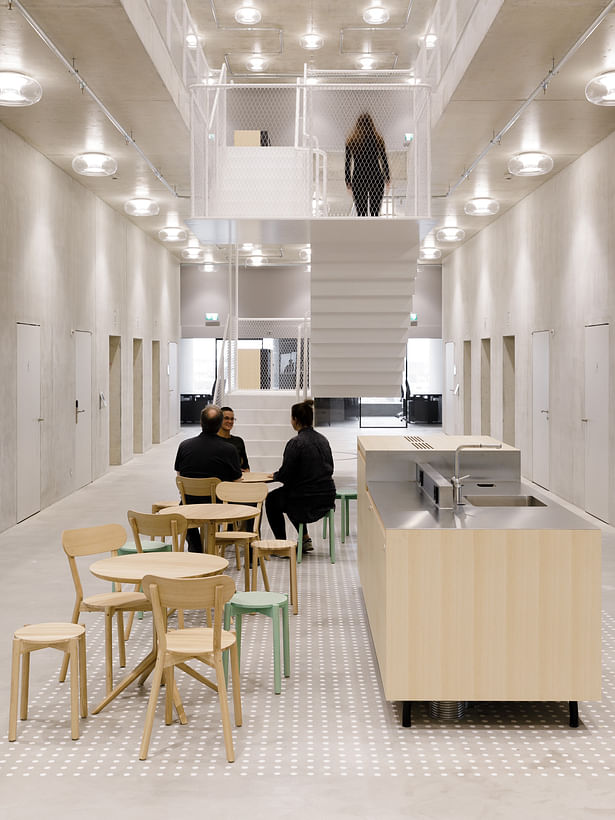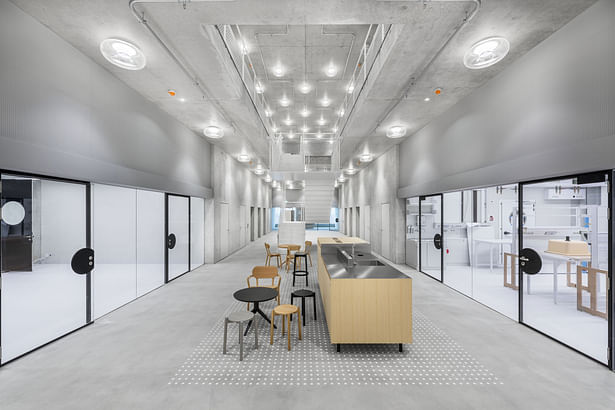
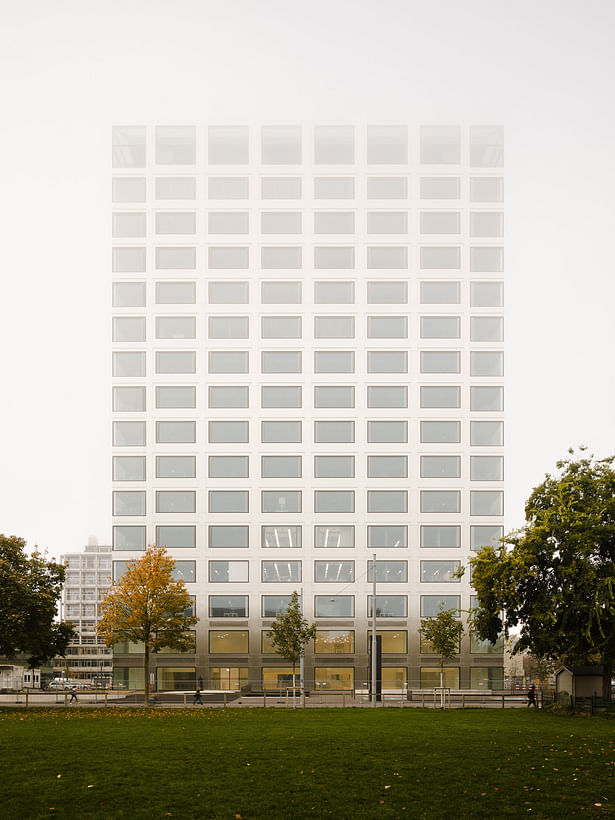
MADE-TO-MEASURE – THE NEW STATE-OF-THE-ART RESEARCH BUILDING BIOZENTRUM OF THE UNIVERSITY OF BASEL.
The University of Basel's Biozentrum is one of the world's leading institutes for basic molecular and biomedical research and teaching. Its new research building opened on September 21, 2021, and has been praised as "the most modern research building in the world, technically and visually a masterpiece."
Located near the Rhine River, the Biozentrum's 72-meter-high tower comprises 19 floors - 16 above ground and 3 below. The underground floors with a far larger floor area make up 40 percent of the entire volume. A floor area of 23,440 sqm houses research facilities, lecture halls, seminar rooms, and scientific equipment for 400 researchers and 900 students. The building brings together urban public space and cutting-edge research and has been created by Zurich-based Ilg Santer Architects as the first part of the new campus site where all faculties will be concentrated in one place.
The chrome and glass facade refers to the technology inside the building. In the structural design, only the facade columns, the building services and the four cores in the tower are loadbearing. The horizontal forces are transferred via frames in the form of Vierendeel trusses. By combining the façade columns with the four cores, the building abandons the conventional solution for high-rise buildings in favor of a floor plan that is as open as possible in the center, allowing great freedom in the division of the various floor levels. The architects decided not to conceal the great amount of technology in the building but to bring it into visible harmony with the structure and space and to connect these with each other.
The top ten floors are dedicated to scientific research. Each floor can accommodate four professorial and research departments of equal size connected by a common 6 meter-wide meeting space. Adjacent floors are connected by an open stairwell and meeting zone that serve scientific exchange, interdisciplinary research, and innovative ideas that arise from chance discussions. The floor plan has no internal columns and therefore offers considerable freedom in dividing up the laboratory spaces to meet the highly specific needs of the respective research groups. The structure and space, flexibility and efficiency, function, and design of the standard floor are precisely balanced and establish a pattern for the entire building.
Below the research floors, the university's computer center, IT services, and central services such as workshops, laboratory equipment, and media preparation fit seamlessly into the tower's basic structure. Everything that does not fit into the floor structure, such as the large lecture halls or special laboratories, finds space in the spacious basement levels with numerous ancillary rooms, delivery and, underground parking.
The white-plastered, three-story entrance hall - 44 x 35 meters long and 13 meters high -– offers added spatial value. Circular elements contrast with the building’s orthogonal basic structure and produce a spatial system rich in visual relationships, interlocking with its surroundings, making the hall the representative heart of the campus. Here, the architects have combined the circulation areas for lecture halls, refectory, and library in one space. In this hall, the massive supporting structure in its inversion becomes a powerful and versatile interior space. Ilg Santer Architects see the hall as a publicly accessible urban forum for the entire campus. Therefore, they have attached all public functions such as cafeteria, reception, lecture halls, library, and store to it. The airy forum invites students to use it as a learning landscape as well.
The building functions at the urban design level as a hinge and center of the new yet-to-be-finished campus area. To allow the open development of the neighboring sites and to provide an outdoor space of the greatest possible size, the architects minimized the building’s footprint by stacking the usable floor area both vertically and below ground level.
About Ilg Santer Architekten Zürich, Switzerland
The architectural firm Ilg Santer Architekten was founded in 2007 in Zurich. Since then, Ilg Santer Architekten has completed a wide range of projects from bridge construction to urban planning scale. The list of works includes award-winning bridge structures, studies on the urban development of Zurich, and large-scale buildings with public appeal such as the new research center Biozentrum in Basel. Ilg Santer is currently focusing on the design of the new Physics Building of the ETH Zurich and the new Hall 1 of the Olma trade fair in St. Gallen, both in Switzerland.
Status: Built
Location: Basel, CH
Firm Role: PR Manager
Additional Credits: Overall management/construction management General planner: b+p Baurealisation, Zurich and Basel, Switzerland www.bp-baurealisation.ch;
Civil engineers: Aerni + Aerni, Zurich, Switzerland, www.aerniaerni.ch;
Landscape architecture: Krebs und Herde, Winterthur, Switzerland, www.krebsundherde.ch;
Building services coordination: Stokar + Partner, Basel, Switzerland, www.stokar-partner.ch;
Facade planning: GKP Fassadentechnik AG, Aardorf, Switzerland, www.gkpf.ch;
Building physics and acoustics: Bakus, Zurich, Switzerland, www.bakus.ch;
Lighting: Licht Kunst Licht AG, Bonn, Germany, www.lichtkunstlicht.com;
Laboratory planning: Dr. Heinekamp Labor- und Institutsplanung GmbH, Basel, Switzerland, www.heinekamp.com;
Furniture: Karimoku New Standard, Japan, www.karimoku-newstandard.jp

